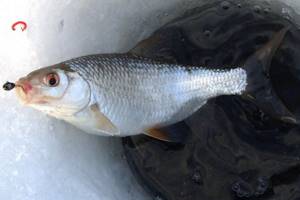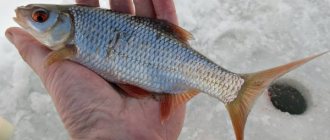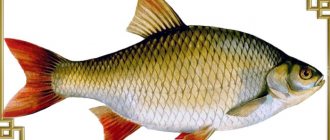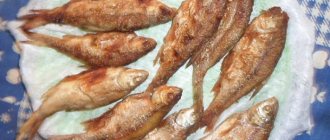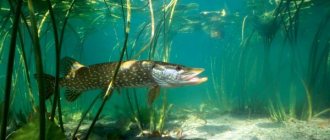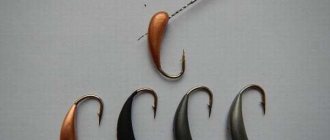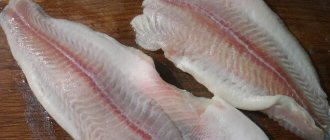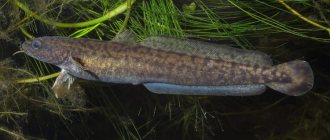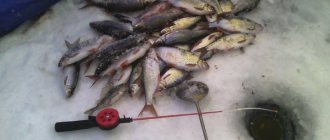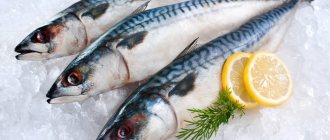Secrets of a successful catch
Soroga (sorozhka) or roach is considered one of the most common and unpretentious fish of our rivers. And there are few among our countless reservoirs where this red-feathered and red-eyed silver-colored fish would not be found.
After reading this article, you can take into account the tips on where, how and what is easier to catch a slug, learn the tricks, its habits and many other secrets, the importance of which you will appreciate later on fishing.
Roach and Sorog
Scientists studying ichthyofauna identify up to 13 subspecies of roach. Each of them has different names and its own characteristics in different areas. Fishermen are familiar with the soroga, sorozhka, roach, ram, bagel, carapace, roach, and red-eye.
In Siberia and the Urals it is a narrow chebak with yellow eyes. In the Arkhangelsk, Vologda, Kirov regions, and the Nenets Autonomous Okrug there is a wide red-eyed sorog. On Baikal and Yenisei there is a path.
That is, the sorog and the roach are all varieties of the same species.
Some ichthyologists have identified a subspecies - the Caspian roach (Rutilus caspicus) - a marine inhabitant of the Northern Caspian Sea, which only spawns in rivers.
The name given to it by the people would be incorrect - “red roach”, which mixes the names of two different species: Rutilus rutilus and rudd Scardinius. The differences are in the iris of the eyes: the first one is red-eyed, the second one is yellow-eyed. Also, the roach has 10-12 soft feathers on the dorsal fin, the rudd has 8-9.
Curious! A representative of the carp or kutum family (pictured below) is listed in the international and Russian Red Books. Its habitat is the Caspian drainage area.
Description of the fish
Many people confuse this fish with rudd, but fish should be distinguished by the color of their scales. The rudd has golden scales and a wider body, while the rudd is a more elongated fish.
The roach's back is greenish, its sides are silvery, but its belly is white. The scales are small and dense. The dorsal and caudal fin of the sorog are greenish-gray with a red tint, the pectoral fins are transparent.
The average length of the fish is about 20 cm. The iris of the eyes is orange with a red spot.
How to distinguish from other types of fish
Despite the description of the roach presented above, novice fishermen cannot immediately distinguish the roach from other types of fish. Most often it is confused with rudd and ide, less often with silver bream, chub and bream. This issue requires detailed consideration.
Rudd has the following differences from roach:
- rounded body, like a crucian carp;
- larger head size;
- eyes of medium size, white or yellowish;
- the scales have a golden tint, the back is dark green;
- fins bright red;
- the dorsal fin is shorter, shifted towards the tail of the fish.

The fins of the rudd have a rich red color.
The rudd is considered a peaceful fish with predatory tendencies. It attacks the bait more sharply, more confidently, and provides decent resistance when fishing.
Advice! It is very exciting to catch rudd with ultralight using micro spinners and micro spinners, small silicone, miniature wobblers and fly wobblers.
Ide is also similar to roach, but for an experienced fisherman their difference is obvious:
- wider body;
- small mouth directed upward;
- scales are smaller, silvery in color;
- eyes with a yellowish tint.
In general, ide is a fairly large fish. In the catches there are individuals from 300 grams to 5 kg. Ichthyologists indicate that it can grow up to 8 kg. It is considered a semi-predatory fish. The diet is based on semi-aquatic insects, mollusks, and small fish.
The chub is the least similar to a roach, but in some reservoirs it has fins with a reddish tint, which makes the angler, especially an inexperienced one, think twice. It has a slab-like elongated thick body, a powerful forehead, a large mouth, and the edge of the anal fin is convex. It feeds on insects, bottom invertebrates, small crustaceans, and fry.
Habitat and food
The sorog lives in fresh water in many reservoirs of Europe, Siberia, Transcaucasia, in the rivers of the Black, Azov, Caspian and Baltic seas. The track prefers to live in quiet and warm rivers with abundant food.
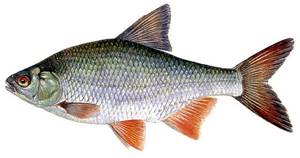
Along the banks overgrown with reeds, the fish reaches a kilogram weight. But further from the shore, in shallow areas, the fish gather in schools. Prefers rivers with a slow flow and a hard bottom.
In summer it comes out to shallow water areas. In winter it lives mainly in small ponds and lakes. If in a lake, then in holes, avoid silted areas. If in rivers, then away from strong currents, in factories and oxbow lakes.
Sorog cannot be found in mountain rivers. In the frosty winter, the sorog very often goes to shallow depths in search of food. In severe frosts it stays in deep-sea pools.
The fish feeds on a variety of predominantly animal foods, and can even eat the eggs of other fish. When there is no other food, it eats plant foods.
The influence of weather on the bite
The roach bite in winter is unstable. There may be several reasons:
- weather;
- presence of underwater currents;
- water temperature;
- oxygen level;
- Atmosphere pressure.
It has been noticed that fishing is most catchy when the weather is consistently good, without sudden changes.
Influence of atmospheric pressure
The well-being of roaches is not affected in any way by atmospheric pressure. Whether it is low or high, the behavior of the fish is the same. The only thing is that with a change in pressure in the atmosphere, the conditions directly in the reservoir change, and the feeding cycles shift. Therefore, the fish does not have time to adapt to new circumstances, which sometimes negatively affects the quality of the catch. Check the atmospheric pressure on the barometer.
What winter weather is the best for biting?
The best bite in winter is observed in consistently clear and calm weather. The main thing is that there are no spontaneous surges in pressure and temperature. It is acceptable when weather conditions change gradually.
Wind influence
But the wind affects the bite. In very windy weather, the fish loses activity and stops responding to the bait. This is more relevant for large-scale reservoirs. For a good bite you need peace and quiet. Other manifestations, such as thaw or frost, do not play a significant role.
Fishing gear
- Rod: light match 4-6 meters, for fishing from the shore - a rigid rod.
- Line: monofilament, 0.16-0.20 mm in summer, 0.12 mm in autumn.
- Leash: from 0.1 mm to 0.15 mm.
- Hooks: small and thin from No. 3 to No. 10
- Bait: maggots, bloodworms, worms, corn, millet, semolina, bread.
- Complementary foods : white bread crackers, millet cereals, peas, anise, pigeon droppings, fennel, corn grains, peas.
Origin of the species and description
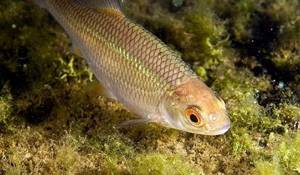
Photo: Roach
The common roach is a representative of the class of ray-finned fish, belonging to the carp family and the order Cypriniformes. The fish is characterized by a large number of subspecies, which have their own names.
Roach is called:
- roach;
- ram;
- chebak;
- flesh;
- sorogoy;
- bagel.
In the vastness of Siberia and the Urals, the roach is called the chebak, which has an elongated narrow body and yellow eyes. The length of the chebak’s body can reach up to 32 cm, and its weight – up to 760 grams. In the Kirov, Arkhangelsk, Vologda regions and on the territory of the Nenets Autonomous Okrug, the roach is called the roach, the fish has red eyes and a body wider in shape than that of the chebak.
Video: Roach
On Baikal and in the Yenisei basin you can hear the name of roach as sorozhka. Vobla can be found in the vastness of the Caspian Sea; during spawning, it enters the Volga, the length of the fish does not exceed 30 cm. The ram lives in the waters of the Azov and Black Seas, entering the beds of flowing rivers during the spawning period. The greatest length of her body is 35 cm, and her weight is about two kilograms.
Freshwater roach is called vein roach, and fish inhabiting brackish waters is called semi-anadromous. Among the residential species, the most valuable is the Siberian roach (chebak), which is harvested on an industrial scale. Such semi-anadromous subspecies as ram and roach are also of commercial importance.
Interesting fact: There is still debate among scientists regarding the identification of varieties and subspecies of roach. Some believe that dividing this fish into subspecies is wrong, others, on the contrary, consider some of the subspecies to be separate, separate species.
Best biting periods
Winter fishing
Winter is considered the best biting period. At this time, the fish are hungry and bite well. Calm air, average pressure and frost of 5-7 degrees are the best conditions for fishing.
During the day in winter the catch will be much larger than at night (watch out for a couple of hours after dark or a couple of hours before dawn). Pay attention to the water. If the water is stagnant, then success is guaranteed; as the current increases, the bite stops.
The secret of winter fishing
After using complementary food from balls that fell to a depth of 4-5 meters, add a mixture of smaller semolina, millet, rice, pearl barley or pre-cooked oatmeal. Pour bread crumbs and porridge particles gradually into the water so that the fish notices the column of food .
Use jigs with bloodworms, maggots, worms and even a piece of lard. Soroga is a very finicky fish, so in addition to jigs, you should have “nymphs” and “devils”. Under the ice, the sorog moves in flocks.
Don't despair if you don't find fish from the first hole you drill. Even the most experienced anglers don't get it right on the first try. Therefore, stock up on plenty of bait. After drilling two or three holes, anglers expect fish.
Spring fishing
As soon as the ice melts and the water warms up, the roach becomes active, gathers in large schools and heads closer to the shore, where it begins to feed. Mid-April is a favorable time for fishing.
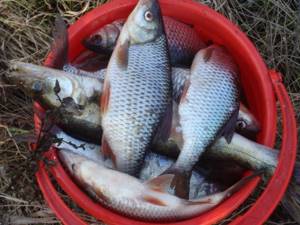
This zhor lasts about two weeks, after which the fish swims away and lingers closer to the bottom. By early May, spawning begins.
For spawning, the fish chooses river mouths, small rivers with shallow depths, bog banks, and reed thickets. Fish always spawn in a school and vigorously, often jumping above the surface of the water.
Sorog lays eggs on last year's foliage, stems, roots, and algae. Therefore, you should not miss these two weeks.
In spring, roach bite well both during the day and at night. In the spring, the sorog has a good appetite before spawning, so use larvae of beetles, maggots, bloodworms, and worms.
In shallow waters in windows among reeds, it is best to catch sorog with a fly rod and jig.
Advice: you should be careful, because rigid fishing rods are not designed for large fish and blows to the body; very often microcracks lead to breakage of the fishing rod. And carefully lowering the rod out the window among the reeds or reeds is not easy.
The secret of spring fishing
Experienced fishermen catch fish in early spring using a “cambric” or the other name for the bait – “cable”. This is a small piece of insulation from a green telephone cable.
During spawning, active fish hold the cable in their mouth a little longer, which allows them to record the bite and make a winning hook.
Almost always in the spring, fish prefer live bait: cut worms, bloodworms, maggots. But the fish will not avoid bait made from pearl barley, bread and wheat.
Summer fishing
In the summer, the habitat of the track is very fickle: either it will be among the water lilies near the surface, or it will sink to the bottom. June-July is a great time for novice anglers to catch sorog.
The tackle will be a regular fishing rod, and the bait will be maggot, worm or dough. A prerequisite is moderate complementary feeding.
Sorog, like many other fish, changes its diet according to the seasons. By summer, she switches to a “vegetarian” diet, will not miss water mulberry, and is good to catch with bread bait and even with steamed peas.
Often, a sorog can be caught using semolina, which is a cooked, non-liquid semolina porridge. If the complementary food falls apart, add a little clay or soil. The lumps should be dense so that they do not fall apart when they hit the water, but reach the bottom.
Summer fishing tips
Large fish cannot be found in ponds and creeks, and most often large individuals live in large bodies of water. As a rule, during the day large fish go 7-10 meters to the bottom, but at dusk they rise to the shallower part of the reservoir.
In the summer, when exposed to air, roaches quickly fall asleep and begin to deteriorate just as quickly. At this time, it must be kept alive until the end of fishing in the cage.
Use complementary foods according to the recipe: one glass of peas + a glass of pearl barley + 2 glasses of millet cereal + a spoonful of sunflower oil. Bait can be made from pearl barley.
Autumn fishing
In September, when the sun warms up, the moth is still active and willingly feeds. The catch will be possible on a clear sunny day. Especially at dawn at 10-11 o'clock there is a good bite.
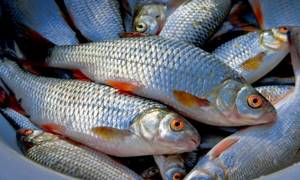
Then the sorog leaves and the bite begins closer to 14-15 hours. Rainy weather, pressure changes, and wind reduce the chances of catching in general.
But with the onset of cold weather in October and November, fish activity decreases, so these are unfavorable months for fishing. During these months, the sorog becomes cautious and timid, because the color of the water begins to change to lighter and more transparent.
The fish goes deeper and deeper, it can be found in holes up to three meters, near reeds or algae, in whirlpools, bays.
When the water temperature drops, the track again switches from plant to animal food (bloodworms, worms, fly larvae) due to the more nutrient content it contains.
Place them very carefully so that they wriggle and attract the attention of the fish. Attractants should not be added to complementary foods in the fall, as the strong smell can scare away a school of fish.
Bait for roaches in spring
When selecting bait for spring roach fishing, it is necessary to take into account the place and method of fishing.
For example, when feeder fishing in a river, a viscous bait mixture is required, and for float fishing in a pond, the bait must be crumbly to create a large spot area. Often you have to combine purchased compounds. So, for feeder fishing, you can mix baits such as “Roach” and “Feeder”.
Many fishermen do not trust industrial formulations, preferring to prepare their own bait.
Groundbait recipe for cooking at home
A simple and effective bait is often used, the basis of which is 0.5 kg of bran and 0.5 kg of breadcrumbs. Add 0.4 kg of corn porridge, a tablespoon of sugar, a teaspoon of salt, 3-4 tablespoons of milk powder and a glass of oatmeal to the mixture. Up to 50 grams of vanillin is added as a flavoring.
The concentration of flavorings in bait directly depends on the water temperature. The warmer the water, the less odorous substances are added. Too fragrant bait can scare away the fish, not attract it.
For roach, we recommend buying Sensas, Trapper or Dunaev bait. These are the most successful mixtures and the package costs no more than 200 rubles.
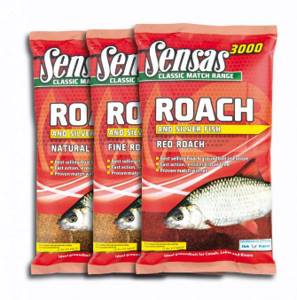
Appearance and features
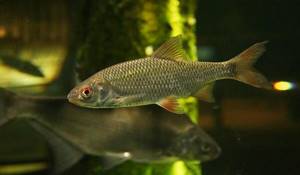
Photo: What a roach looks like
The body shape of the roach is elongated, the body is slightly flattened on the sides. Basically, fish scales have a silvery color, but sometimes there are specimens of a copper-yellow hue, this depends on the places of permanent fish dislocation. The roach's spine has a dark gray tint, sometimes it shimmers with blue or greenish tones. What distinguishes the roach from its close relatives is the presence of non-sharp pharyngeal teeth, which are located on both sides of the mouth.
The scales of the roach are large and densely set; from 40 to 45 scales can be counted along the lateral line. The dorsal fin has from 9 to 11 rays, and the anal fin has 9-12. The fish has no median lateral line. The dorsal and pelvic fins are located symmetrically. The color of the caudal and dorsal fins is greenish-gray or brownish, and the ventral, pectoral and anal fins are orange or red. The roach's round eyes have an orange or red iris.
The fish head has a pointed shape. The roach's mouth opening is small, and the upper jaw protrudes slightly forward, creating a sad, fishy appearance. Roach loyally tolerates polluted water, where the oxygen content is at a fairly low level. The growth of the roach proceeds at a slow pace, in the first year of life its length is 5 cm, closer to the age of three years, the length of the fish varies from 12 to 15 cm, and it grows up to 30 cm when it reaches the age of ten. On average, the length of a mature individual ranges from 10 to 25 cm, and its weight can be from 150 to 500 grams.
Interesting fact: The world record was set in Germany, where a roach weighing 2.58 kg was caught.
What do roaches eat?
As usual, roach is a fish whose food preferences and characteristics depend on the type of reservoir and the annual season. Plant food predominates in summer and in “southern” reservoirs. In northern latitudes and in autumn and winter - animals.
Sorog usually does not go hungry. The basis of nutrition is gastropods and algae. Definitely - many representatives of invertebrates. Therefore, the stomachs of roaches are constantly full of larvae of mosquitoes, caddis flies, and mayflies. In addition to algae, fish are not averse to feasting on the soft tissues of higher plants.
Winter roach also comes out to feed. However, not so actively and in many ways coordinating with weather changes.
Numerous roaches are a natural food competitor for many fish - bream, peled, grayling, and whitefish. However, it itself is included in the food chain. Therefore, it is a favorite baitfish among gherlings.
It’s unfortunate that roaches are a popular target in the life cycle of parasites that are also dangerous to humans.
Fishing Tips
- Soroga is a very careful fish. It is better to catch it with light tackle. A common method is a float rod. This fish lives in schools. It is enough to feed it in a certain place and the catch will be ensured.
- The fish is quite sensitive to movements. Therefore, it needs to be fed intensively , but in small portions. For bait you can use worms, bread crumbs, and cereals.
- Soroga loves to move. Therefore, it is advisable to prepare additional gear. And the bait should be similar to natural.
- This is a very shy fish. Therefore, the caught fish must be removed immediately. Even a huge float and a bulky sinker can scare her away. The rod should be held in your hand, and not placed on the rod. This will allow you to feel even minor bites.
- It is necessary to clearly correlate the sizes of the bait and the track that you are catching. If the sizes of the fry and the caterpillar are the same, then the fish will never be hooked.
- Before fishing, it is advisable to measure the depth of the reservoir. If you drag the bait along the bottom, the curious sorog will not ignore it.
- It is better to cast the bait at the border with aquatic vegetation. The fish come there for food. If fishing occurs on the border with a fast current, then the bait should be located along the edge of the current , which will ensure the bait plays. The fish will quickly notice this.
- To catch sorog in winter, winter fishing rods are required. Jigs are equipped with caddis larva or bloodworms
Lifestyle
Roach inhabits rivers, lakes, ponds, reservoirs, canals, and estuaries. Prefers areas overgrown with vegetation. It lives on the border of thickets and open water in places with moderate currents and warm water. Schooling fish. By nature of nutrition - euryphage. Adults feed on a variety of invertebrates and their larvae, mollusks; in summer they consume a lot of filamentous algae, and when there is an abundance of fry, large roach feed on fish larvae and fry. Semi-anadromous forms and large roaches from reservoirs prefer to feed on mollusks, in particular Dreissena. Semi-anadromous forms (roach, ram) from the lower reaches of our southern rivers (Volga, Ural, Don, Kuban) feed in brackish areas of the sea, and go to the rivers to spawn, rising low along them.
Resident roach reaches sexual maturity at the age of 3-5 years. It reproduces in spring (March - May) at water temperatures of 8 ᵒC and above. A typical phytophile, the eggs adhere to plants. Spawning is one-time, spawns in large flocks, and spawning in lakes is noisy. The diameter of the eggs is about 1.5 mm. Fertility 2.5-100 thousand eggs. Egg development takes place in 9-14 days. The average length of larvae at hatching is 5.2-6.6 mm. They quickly switch to feeding on small invertebrates. Semi-anadromous forms grow faster, mature at larger sizes, and their fertility can reach 200 thousand eggs. After spawning, adults return to the sea and feed heavily.
